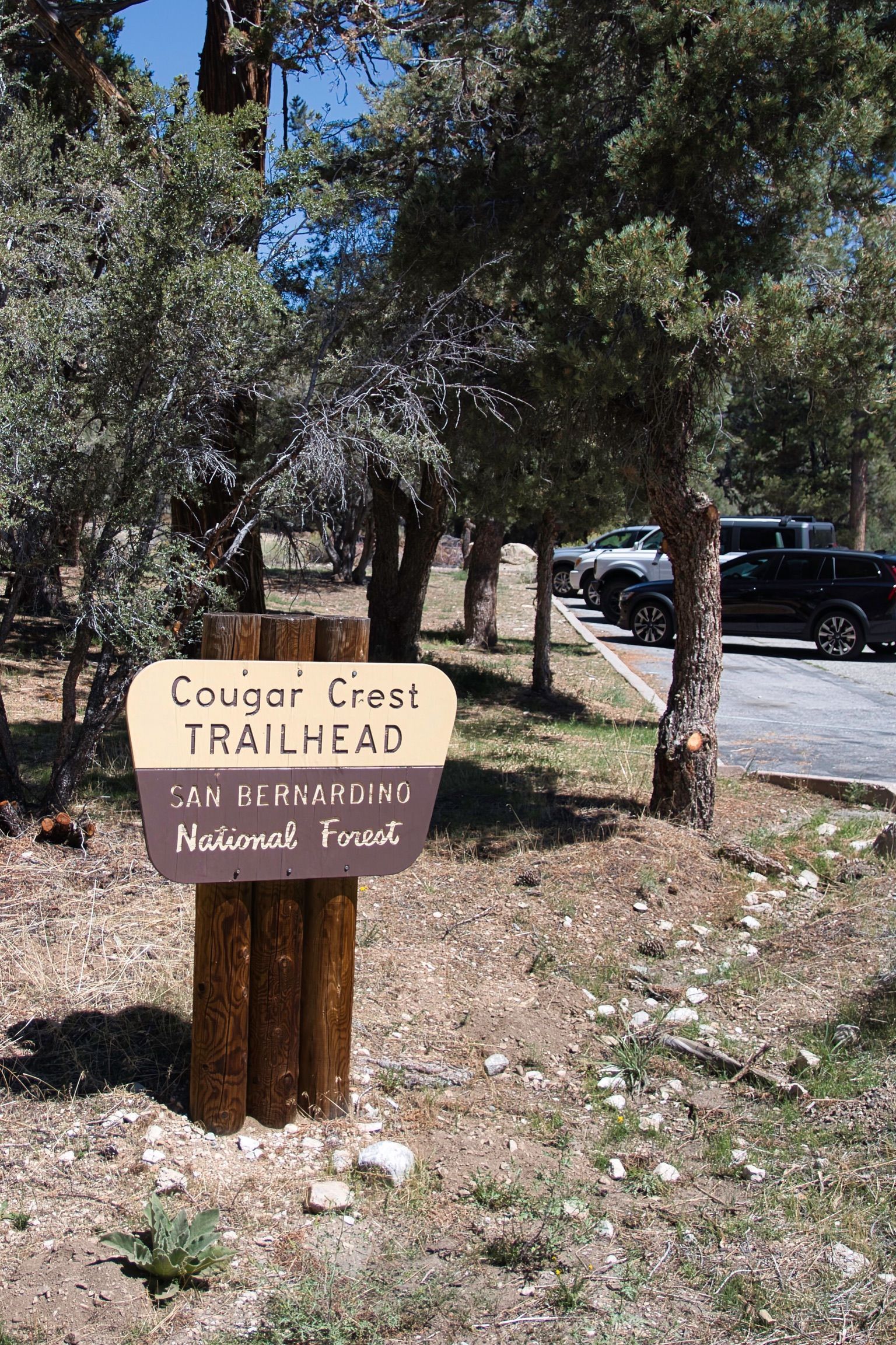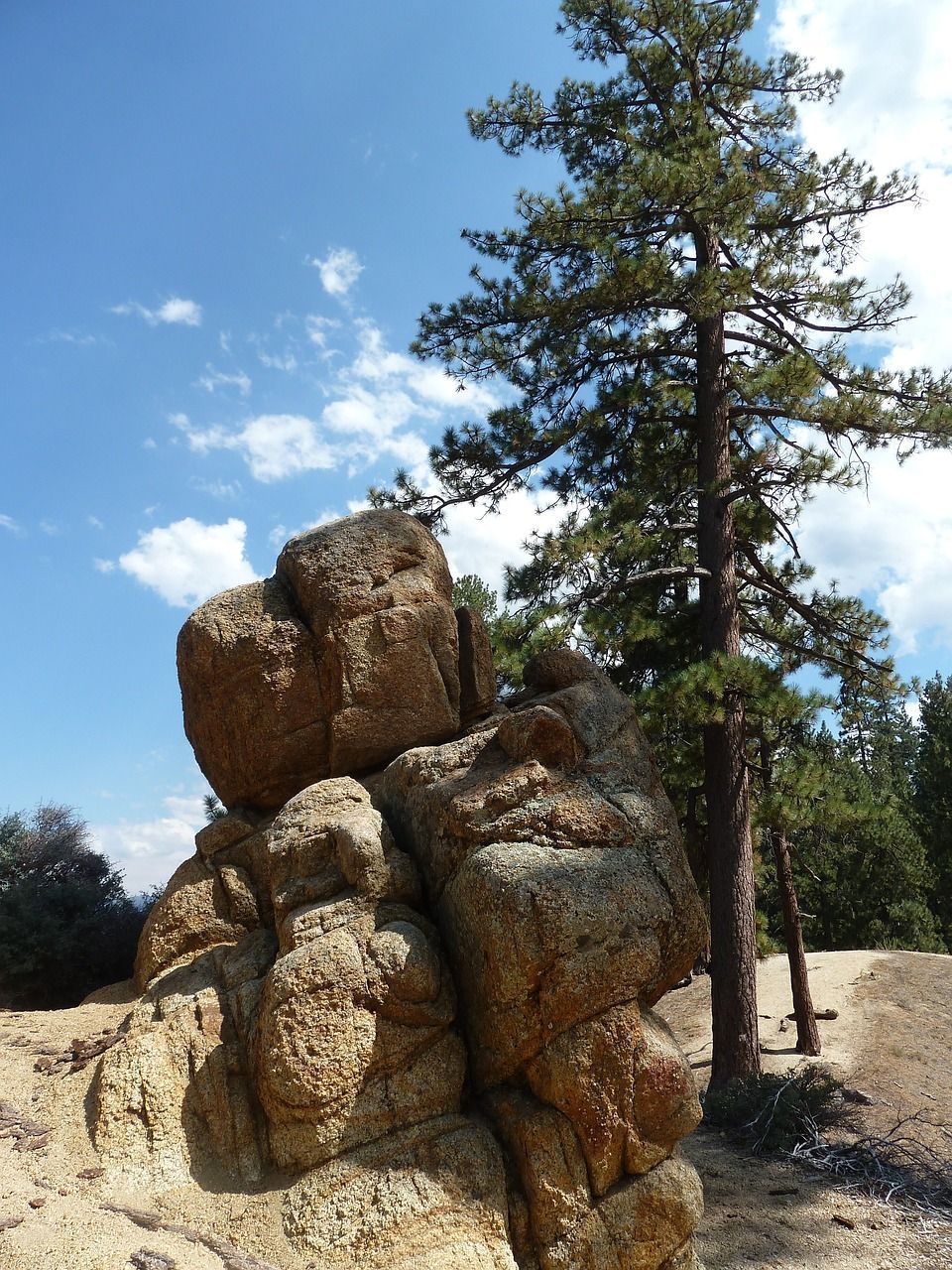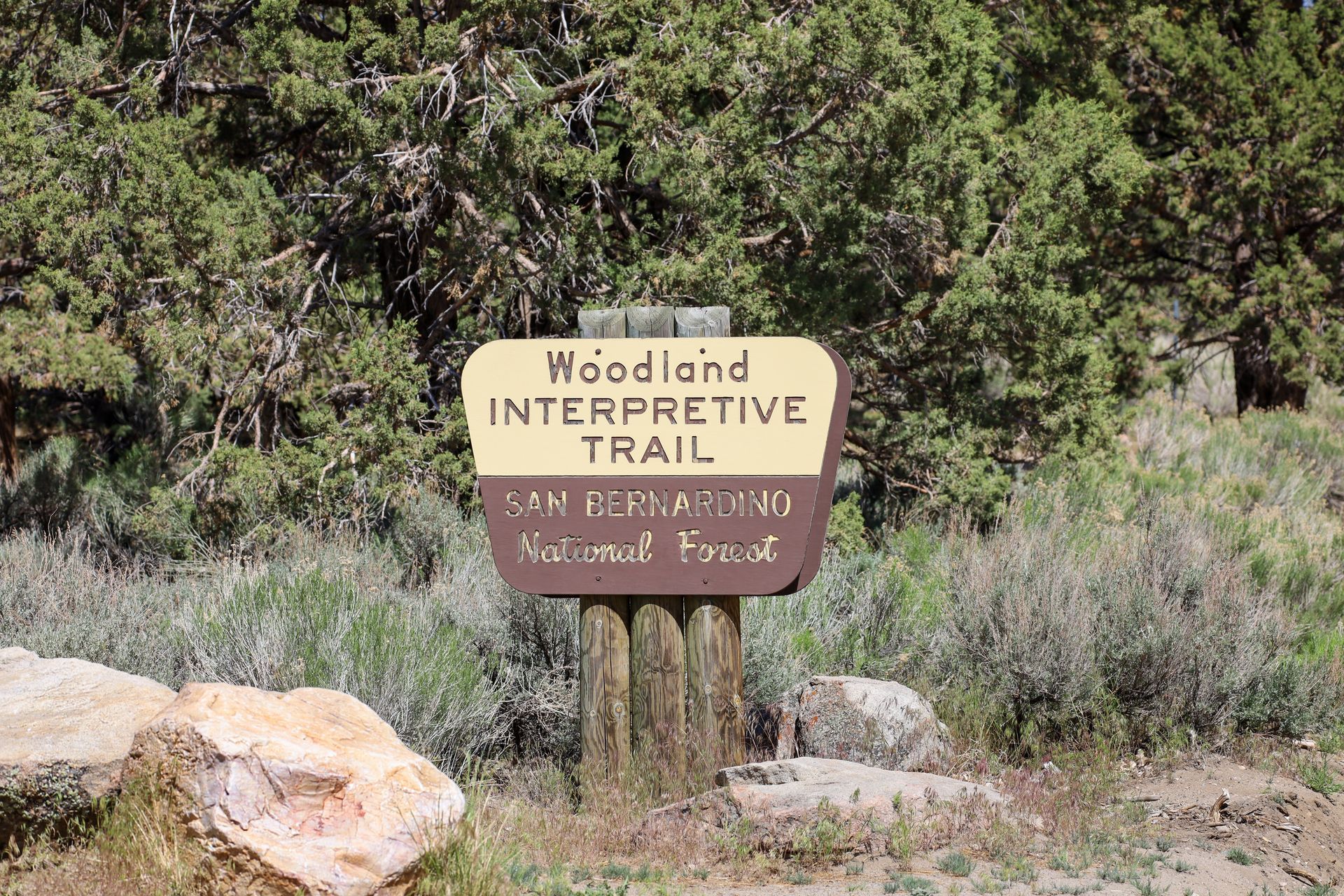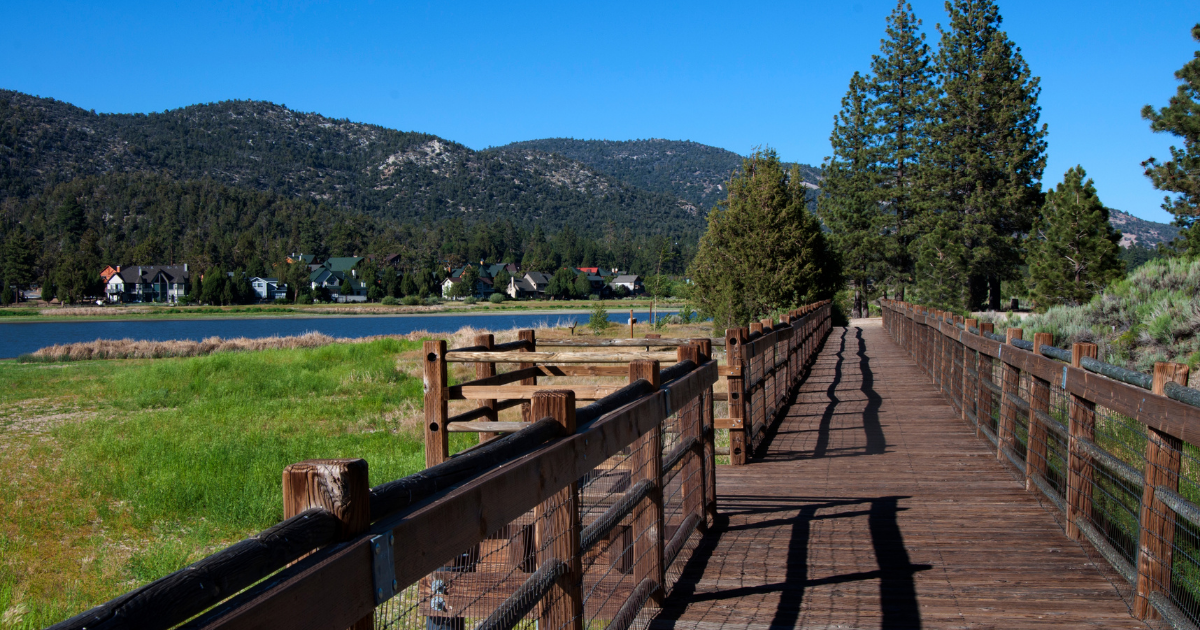Cougar Crest Trail
Explore Big Bear Lake's beauty on the moderate 4.8-mile Cougar Crest Trail. Enjoy panoramic lake views, a PCT junction, and optional Bertha Peak summit.
Length/Distance
The trail is approximately 4.8 miles (out and back)
Elevation
Approx 800 feet elevation gain
Difficulty Level
Moderate
Dogs
Cougar Crest Trail: Your Lakeside Vista
Trailhead: Find the well-marked Cougar Crest Trail parking lot on North Shore Drive, about 0.6 miles west of the Big Bear Discovery Center and 2 miles west of Stanfield Cutoff (north side of the lake). Ample parking is usually available.
Alternative Access: During busy weekends, consider parking at the Big Bear Discovery Center and taking the short connecting path to the Cougar Crest Trailhead.
Hike Details:
Distance: 4.8 miles roundtrip (out and back).
Estimated Time: Allow 2-3 hours, depending on your pace and how long you stop to enjoy the scenery.
Difficulty: Moderate. Expect a consistent uphill climb with some steeper sections, gaining approximately 720 feet in elevation. Suitable for moderately experienced hikers comfortable with elevation gain.
Elevation at Trailhead: Approximately 7,000 feet.
What to Expect:
The Ascent: The trail gradually climbs through a beautiful forest of pine and oak trees. The initial mile involves a significant portion of the elevation gain (around 400-500 feet).
Pacific Crest Trail Junction: After about 2.5 miles, you'll reach the Cougar Crest-PCT junction. This marks your connection to the legendary Pacific Crest Trail, offering a glimpse into this long-distance route.
Optional Bertha Peak Summit: For even more spectacular views, continue onto the PCT for a short 0.25 miles, followed by a steep 0.8-mile ascent to Bertha Peak.
Breathtaking Views: Prepare for stunning panoramic vistas of Big Bear Lake and the surrounding forested mountains as you gain elevation. Fall foliage offers particularly beautiful scenery.
Wildlife Encounters: Keep an eye out for local wildlife, such as squirrels, birds, deer, and occasionally bears.
Seasonal Conditions: The trail is generally open year-round. However, be prepared for snow and ice during winter months.
Understanding Our Trail Difficulty Ratings: Know Your Limits!
Our trail ratings (Easy, Medium, Difficult) are provided as a general guide to help you choose a suitable hike.
Easy Meaning: Generally flat or gently sloping terrain. Well-maintained paths with minimal obstacles like roots or rocks. Suitable for most fitness levels, including beginners and families with young children. Expect a leisurely and comfortable experience.
Medium Meaning: Involves moderate inclines and declines. The trail surface may be uneven with some roots, rocks, or narrower sections. Requires a reasonable level of fitness and some hiking experience. Expect a bit of a workout and the need to pay more attention to your footing.
Difficult Meaning: Features significant elevation changes (steep climbs and descents). Expect challenging terrain with obstacles like large rocks, roots, potentially slippery surfaces, and possibly exposure. Requires a good level of fitness, experience with more demanding trails, and appropriate gear. Expect a strenuous and potentially technical hike.
Our trail ratings are a general guideline. Your personal fitness, experience, current conditions (weather, trail surface), and any pre-existing health conditions will significantly impact your perception of a trail's difficulty. Always err on the side of caution and choose a trail that aligns with your capabilities.
Dog-Friendly Trails: Hike Responsibly with Your Pup!
Just because a trail welcomes dogs doesn't automatically mean it's the right choice for yours. Always consider the trail's difficulty and potential hazards for your dog's safety.
Big Bear Lake trails can feature dangerous steep hills, high elevations that can be challenging for some dogs, and uneven terrain. Assess your dog's fitness level, breed predispositions, and experience before choosing a hike.
Remember, responsible dog ownership on trails includes:
- Keeping your dog on a leash at all times for their safety, the safety of other hikers and wildlife, and to comply with regulations.
- Always picking up and properly disposing of your dog's waste to keep our trails clean and healthy for everyone.
- Prioritizing your dog's well-being ensures a safe and enjoyable experience for both of you on the trail.
General Hiking Safety: Be Prepared and Stay Safe!
Big Bear Lake trails offer beauty, but be mindful of inherent risks:
- Wildlife: Unpredictable encounters can be dangerous. Prepare by knowing local animals and safe practices.
- High Elevation: Altitude sickness and dehydration are real risks. Acclimatize and hydrate diligently.
- Hazardous Terrain: Falls from uneven surfaces, rocks, and cliffs are possible. Watch your footing and be cautious near edges. Weather changes can worsen conditions.
- Lack of Water/Food: Dehydration and exhaustion are serious threats. Carry ample water and snacks.
- Getting Lost: Disorientation can lead to dangerous situations. Stay on marked trails and carry navigation.
- Inadequate Gear: Lack of proper equipment increases vulnerability. Wear appropriate shoes, layers, and carry a first-aid kit and light.
- Unannounced Hikes: Delays in help during emergencies can be critical. Always tell someone your plans.
Understanding these dangers and preparing accordingly is crucial for a safe and enjoyable hiking experience. By being prepared, aware of your surroundings, and respecting the natural environment, you can significantly enhance your safety and enjoyment on the trails.
Discover More Trails

WildLfe
Add a link
Add a link
Add a link
add a title
Add a link
Add a link
Add a link
add a title
Place an image or any other element you want
Add a link





